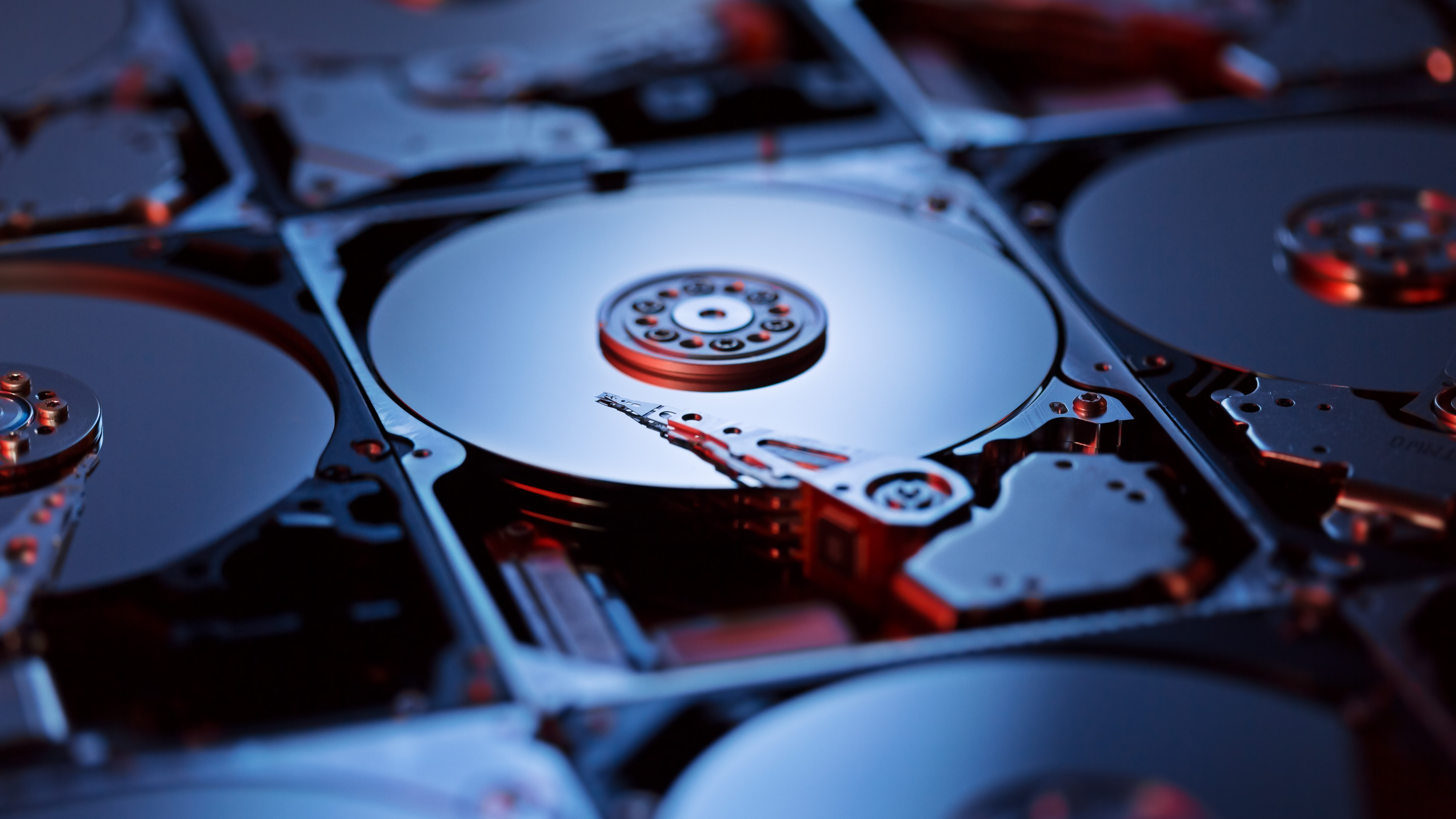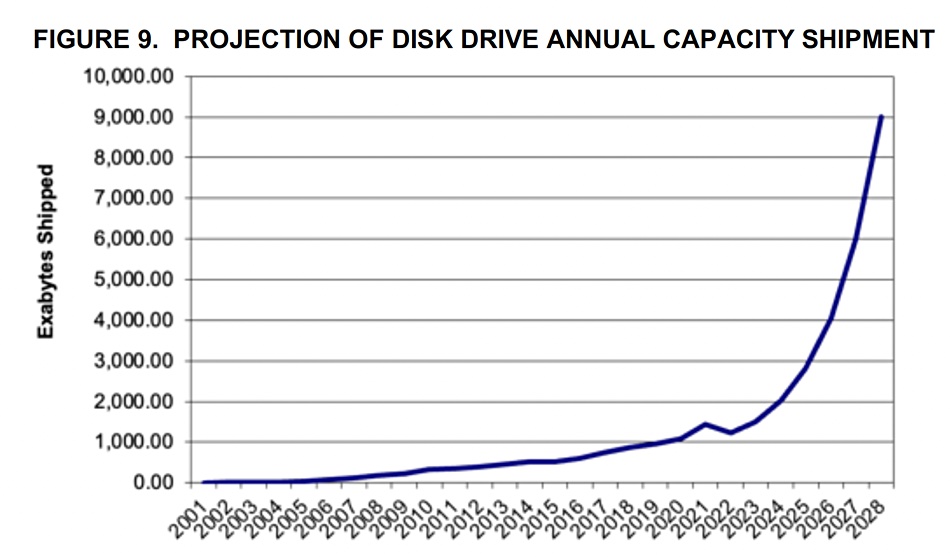
SSDs might be the defacto storage standard on laptops and gaming PCs, but spinning disk drives are still the predominant storage medium for datacenters. Predictions estimated that this behavior will stretch until 2028 when hard drive sales were predicted to fall in favor of SSDs. But a new report from Blocks and Files counters that prediction, estimating that hard drive sales will hold strong to 2028.
Blocks and Files reported on a forecast made by Coughlin Associates estimating that the current rise in SSD sales will have minimal impact on tape and HDD shipments. The main drivers behind this behavior include AI, the Internet of Things, media, entertainment, and the medical industries. Each of these increase demand for large capacity hard drives.
Two charts were shared, showing the annual projected growth of hard drives by form factor and hard drive shipments in terms of capacity. The former revealed that the growth of 3.5 inch hard drives and 2.5 inch hard drives combined were expected to accelerate from 150,000 units sold in 2024 to just over 200,000 in 2028. (The graph also projected 2.5 inch drives losing in popularity to 3.5 inch as well.)

The latter revealed an exponential growth in hard drive shipments, sorted by exabytes shipped. In 2022, roughly 1500 exabytes of hard drive capacity were shipped out, by 2028 Coughlin's projections estimate that number will grow by six times, amounting to 9000 exabytes shipped.
Coughlin also reported that it expects head and media demand to double by 2028 if the nearline-storage market recovers this year or early next year. Coughlin goes on to say that the growth of high-capacity nearline drives for enterprise and hyperscale applications will result in more drive components which will provide the biggest demand increase for heads and media. Nearline storage is a storage strategy that balances the line between offline archival storage and always-accessible online storage. Nearline hard drives are capable of being housed completely offline — detached from a computer but can be made available quickly without intervention by IT.
There are definitely merits to this report, previous hard drive projections that we covered did not cover the possible recovery of the Nearline storage market which could definitely extend hard drive dominance by several years. Nearline-capable systems don't need SSDs to perform well since data doesn't need to be accessed immediately like an always-on solution. The most important aspect of a near-line-storage system business will care about is the cost-per-gigabyte.
We've also encountered another storage-related report claiming that hard drives can use less power than SSDs under heavy-enough workloads. If this is true, this could also seriously extend the life of the hard drive industry even more.
But 2028 is still several years away, so we have to take any predictions with a grain of salt. Nonetheless, the growing amount of reports showing favorable market trends for hard drives could spell the delayed domination of SSDs until the 2030s or longer.
August 16, 2023 at 07:17PM
https://news.google.com/rss/articles/CBMiXGh0dHBzOi8vd3d3LnRvbXNoYXJkd2FyZS5jb20vbmV3cy9zc2RzLXdpbGwtbm90LXJlcGxhY2UtaGFyZC1kcml2ZXMtZm9yLXNldmVyYWwteWVhcnMtcmVwb3J00gEA?oc=5
No, SSDs Will Not Kill Hard Drives: Report - Tom's Hardware
https://news.google.com/search?q=hard&hl=en-US&gl=US&ceid=US:en

No comments:
Post a Comment